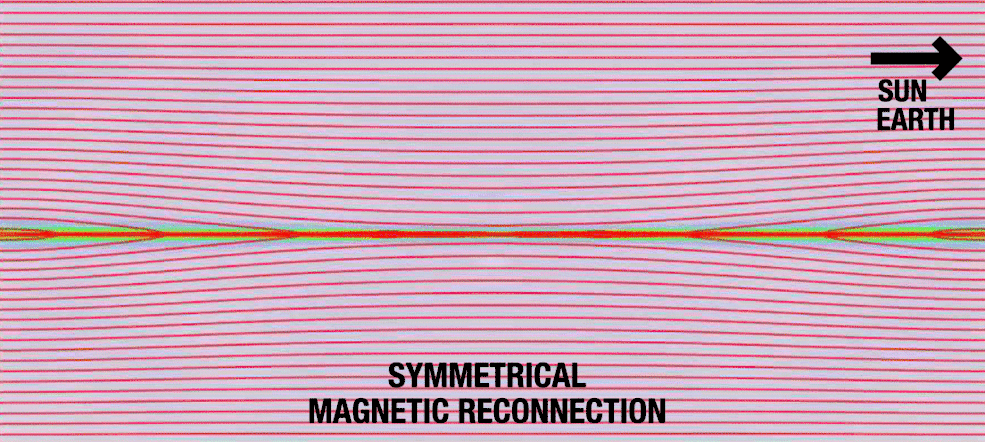Nov 16 2018
High above, in the near-Earth space, everything seems tranquil occasionally. However, it does not remain so always. At times, the light particles and energy present in space offer a terrifying show: a single great explosion, which lasts only for a fraction of a second, can result in millions of electrons moving apart at supersonic speeds.
 Behind Earth, away from the Moon, magnetic reconnection occurs symmetrically. This simulation shows particles traveling away from the site of reconnection equally in both directions, confined by the red magnetic field lines. View animated GIF: https://www.nasa.gov/sites/default/files/thumbnails/image/symmetrical.gif (Image credit: Michael Hesse/NASA Goddard/Joy Ng)
Behind Earth, away from the Moon, magnetic reconnection occurs symmetrically. This simulation shows particles traveling away from the site of reconnection equally in both directions, confined by the red magnetic field lines. View animated GIF: https://www.nasa.gov/sites/default/files/thumbnails/image/symmetrical.gif (Image credit: Michael Hesse/NASA Goddard/Joy Ng)
Some electrons fly out into space, while others are funneled along magnetic field lines into Earth’s upper atmosphere where they form auroras or ravage power grids if a very large event occurs. For the past three years, NASA’s Magnetospheric Multiscale mission (MMS) has been examining such explosions—formed in a process known as magnetic reconnection.
In the second phase of its mission, recently, MMS observed reconnection in Earth’s magnetotail—the fraction of Earth’s magnetic environment trailing behind the planet, away from the Sun — with adequate resolution to exhibit its true nature more vividly. The outcomes of the study have been reported in Science.
Magnetic reconnection takes place around Earth on a daily basis because of the twisting and reconnecting of magnetic field lines. It occurs in various ways in different locations, with diverse effects. For instance, in the magnetotail, the reconnection process can form aurora near Earth. In the magnetotail, the event which was observed by MMS was found to throw particles symmetrically, contrary to how it happens on the sunward side of Earth. On the front line, the solar wind—a steady flow of charged particles from the Sun—pushes into Earth’s magnetic field. Due to their varied densities, the two sides connecting are not equal, which results in asymmetrical magnetic reconnection. On the rear end, however, in the magnetotail, the explosion arises from an entanglement of two sets of Earth field lines which are of same intensity; therefore, the particles are accelerated almost the same in both directions.
Magnetic reconnection also takes place on the Sun as well as across the universe—in all events forcefully flinging particles and driving much of the change observed in dynamic space environments—hence learning about it around Earth also helps gain insights about reconnection in distant places where it is not possible to measure directly. By gaining more insights on different types of magnetic reconnection, one can more easily make up what such explosions might look like elsewhere and how to better prepare for severe events here on Earth.